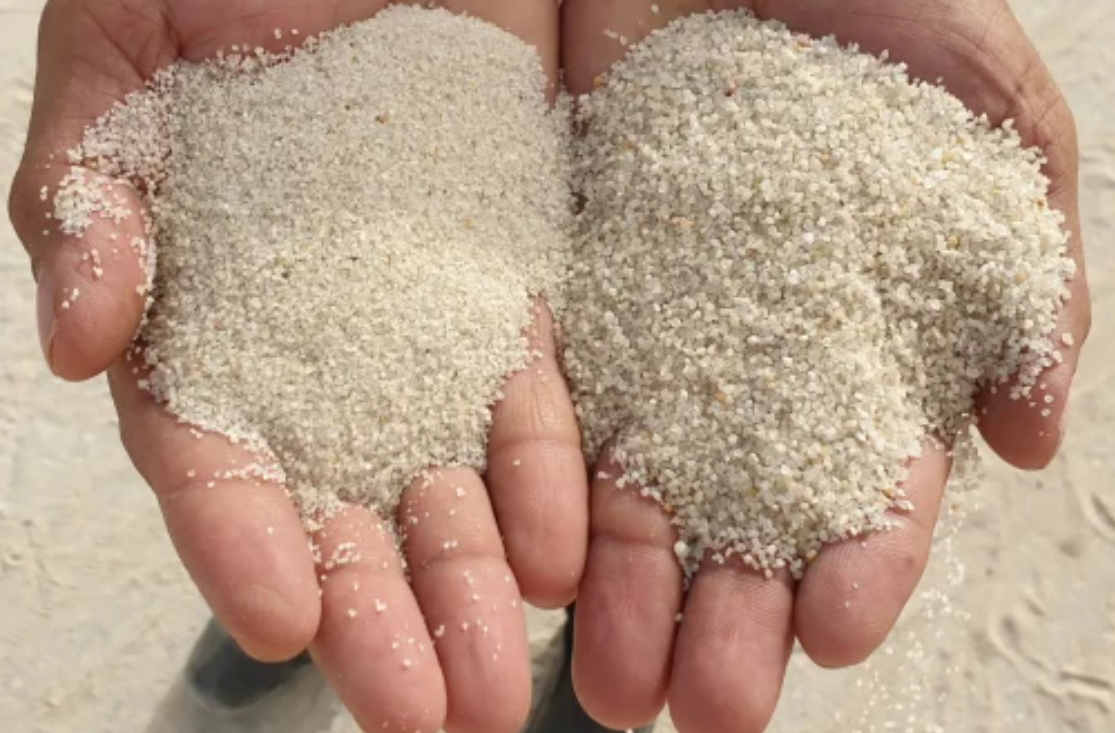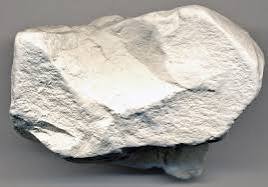Minerals, Ores & Metal Concentrates
Minerals, ores, and metal concentrates form the foundation of many industrial processes, playing a pivotal role in various sectors such as mining and metallurgy. Minerals are naturally occurring substances with a defined chemical composition and crystalline structure. Ores, on the other hand, are naturally occurring rocks or minerals containing economically valuable elements, often metals. The extraction and processing of ores yield metal concentrates, which are refined materials with a high content of specific metals. These concentrates serve as raw materials for the production of metals through smelting or other refining processes. The mining and utilization of minerals, ores, and metal concentrates are essential for meeting the demands of modern industries, ranging from construction and manufacturing to technology and infrastructure development. The exploration and sustainable management of these resources are critical for ensuring a stable supply chain and minimizing environmental impact in the extraction and processing phases.
Bentonite
Bentonite is a versatile clay mineral with unique properties that make it valuable across various industries.
The diverse applications of bentonite highlight its significance in various industrial processes, where its unique properties contribute to improved efficiency and performance.
Applications of Bentonite:
- Composed mainly of montmorillonite, bentonite is known for its exceptional swelling and absorption capabilities when mixed with water. In the field of geotechnical engineering, bentonite is widely used in drilling fluids to lubricate and cool the drill bit, as well as to seal boreholes and prevent fluid migration.
- It is also a key component in the production of foundry sands for casting metals, as it helps in creating molds with good strength and thermal stability.
- In the environmental sector, bentonite is used for sealing landfills and creating barriers to control the migration of contaminants.
- In the food industry, it serves as a clarifying agent in the production of wine and beer.
- Additionally, bentonite has applications in the cosmetics and pharmaceutical industries due to its absorbent and binding properties.

Silica Sand
It is one of the most common varieties of sand found in nature and is widely used in various industrial applications. Silica sand is composed of quartz crystals and is often mined from natural deposits or obtained through the processing of sandstone.
Applications of Silica Sand:
- Silica sand, predominantly composed of quartz, serves as a fundamental material in construction for concrete, glass manufacturing, and foundry casting due to its strength and clarity.
- Its abrasive properties make it essential in sandblasting, while as a proppant, it aids in oil and gas extraction.
- Silica sand is used as a filtration medium in water treatment plants and swimming pool filtration systems. It helps remove impurities and particles from water.
- Silica sand is used in the production of ceramics and refractory materials. Its high melting point and resistance to thermal shock make it suitable for these applications.
- Silica sand is used in hydraulic fracturing (fracking) in the oil and gas industry. It helps prop open fractures in the rock to allow for the extraction of oil and gas.
- Silica sand is used in sandblasting applications to clean or etch surfaces. The abrasive nature of silica sand makes it effective for this purpose.

China Clay
China clay, also known as kaolin, is a white, fine-grained, and soft clay mineral composed mainly of kaolinite.
Mined from natural deposits, it is named for its origin in China, where it has been used for centuries in the production of porcelain and ceramics.
Applications of China Clay:
- China clay finds extensive application in various industries, including paper, rubber, paint, and plastics, serving as a filler, extender, and coating material.
- Its unique properties, such as high plasticity and low iron content, make it valuable in the manufacturing of porcelain, ceramics, and refractory materials.
- Additionally, it is used in the cosmetics and pharmaceutical industries for its absorbent and bulking qualities.

Talc
Talc is a naturally occurring mineral known for its softness and greasy feel. Composed of magnesium, silicon, and oxygen, talc is widely used in various industries.
Applications of Talc:
- In the cosmetic and personal care sector, it is a common ingredient in powders, makeup, and skincare products due to its ability to absorb moisture and provide a smooth texture.
- In the pharmaceutical industry, talc is used as a lubricant in the production of tablets.
- Additionally, it finds application in the manufacturing of plastics, paints, and ceramics.
- Talc's versatility, low hardness, and heat resistance contribute to its widespread use in industrial and consumer products.

Dolomite
Dolomite is a sedimentary rock and mineral composed of calcium magnesium carbonate. Recognized for its distinctive pinkish or white appearance, dolomite is widely used in various applications.
Applications of Dolomite:
- In construction industry, it is employed as a building material for both structural and decorative purposes.
- As a flux in metallurgy, dolomite is utilized to remove impurities during the refining of metals like iron and steel.
- In agriculture, it serves as a soil conditioner, adjusting pH levels and providing essential nutrients.
- Additionally, dolomite is used in the production of refractory bricks, ceramics, and glass.
- Its diverse applications underscore its significance in both industrial and environmental contexts.

Feldspar
The versatility and abundance of feldspar make it a significant component in diverse industrial processes.
Feldspar is a group of minerals that constitute the most abundant group of rock-forming minerals on Earth. Comprising aluminum, silica, and oxygen, feldspar comes in various forms, with orthoclase, albite, and anorthite being common examples.
Applications of Feldspar:
- It plays a crucial role in the ceramics and glass industry, providing fluxing agents for lowering the melting temperatures of raw materials.
- In construction, feldspar is used in the production of tiles and porcelain.
- Additionally, it finds application in the manufacturing of glass, enamels, and as a filler in various products.

Quartz
Known for its hardness and durability, quartz is widely used in various industries
Quartz is a crystalline mineral composed of silicon and oxygen atoms, forming a tetrahedral structure. It is one of the most abundant minerals on Earth and comes in various forms, including clear, milky, rose, and smoky quartz. Known for its hardness and durability, quartz is widely used in various industries.
Applications of Quartz:
- In the realm of construction and countertops, engineered quartz surfaces, made by combining crushed natural quartz with resins and pigments, provide a durable and aesthetically pleasing alternative.
- Quartz is also crucial in the electronics industry, serving as a key component in the production of semiconductors and quartz crystal oscillators.
- Its piezoelectric properties make it valuable in watches and various precision instruments.
- Additionally, quartz has metaphysical associations and is often used in jewelry for its beauty and symbolism.
- The versatile and unique properties of quartz contribute to its broad range of applications across technology, construction, and aesthetics.

Copper Slag
Copper slag is a byproduct obtained during the smelting and refining of copper ore.
Copper slag is a byproduct of the metal smelting and refining process of copper. It is typically produced during the pyrometallurgical extraction of copper from copper ores. Copper slag is a granular, glassy material that contains iron, silica, alumina, calcium oxide, and other metal oxides in varying proportions. The exact composition of copper slag can vary depending on the source and the specific smelting process.
Applications of Copper Slag:
- It is granulated, abrasive, and exhibits strong bonding properties. Widely used in the construction and abrasive industries, copper slag serves as an alternative to sand in concrete production.
- It is used as a blasting agent for cleaning, surface preparation, and rust removal due to its hardness and angular shape.
- Copper slag can be incorporated into asphalt mixtures to enhance the properties of the asphalt. It contributes to the stability and durability of road surfaces.
- Copper slag can be added to soil as a stabilizing agent. It helps improve the engineering properties of soil, such as shear strength and compressibility.
- Copper slag can be used as a filter medium in water treatment processes. It is effective in removing impurities and contaminants from water.

Mica
Mica is a substance that exists naturally. Its nature is elastic, transparent, and optically flat. Iron, silicate, aluminium, potassium, manganese, and water make up its constitution. It is the most favoured mineral in industries and other personal applications since it has the highest silica content.
Applications of Mica:
- It is one of the important ingredients in makeup and various cosmetics.
- It helps in preventing cracks by acting as wadding in the gypsum wallboard combined compound. It is mostly used for this process.
- Mica is a bad conductor of electricity and can endure high temperatures.
- Mica powder is mixed with lacquers, glazes, waxes, top coats and varnishes to apply on furniture.
- It used to manufacture Mica capacitors which offer stability, high precision and reliability.
- Mica can be made into thin sheets. They are heat tolerant, insulating and dielectric. Because of these properties, they are used in electrical appliances.

Limestone
Limestone is a sedimentary rock primarily composed of calcium carbonate, often formed from the remains of marine organisms.
Applications of Limestone:
- Recognized for its durability and versatility, limestone is extensively used in construction for buildings, roads, and as a raw material in cement production.
- Its distinctive appearance and ease of carving make it a popular choice for sculptures and architectural ornamentation.
- Additionally, limestone serves practical purposes in neutralizing acidic soils and purifying water due to its solubility in weak acids.
- The rock's varied applications underscore its significance in both natural geology and human activities, contributing to a wide range of industrial, architectural, and environmental uses.

Diatomaceous Earth
Diatomaceous Earth (DE) is a natural sedimentary rock powder composed of fossilized diatoms, microscopic algae with silica skeletons. The primary component of diatomaceous earth is silica, and it is known for its porous and abrasive nature.
Applications of Diatomaceous Earth:
- Widely used in various industries, DE has versatile applications, including as a natural insecticide, filtering agent, and additive in products like toothpaste and cat litter, owing to its porous and absorbent qualities.
- Diatomaceous earth is often used as a natural insecticide. The fine powder has abrasive particles that can damage the exoskeletons of insects.
- Diatomaceous earth is commonly used as a filtering agent in pool filters. The porous structure of the diatomaceous earth particles allows for efficient removal of small particles and impurities from water.
- Diatomaceous earth is used as an absorbent material for cleaning up oil spills and other liquid spills. Its high absorbency makes it effective in absorbing and containing liquids.
- In some industrial applications, diatomaceous earth is used as an insulating material due to its low thermal conductivity.
- In construction, diatomaceous earth can be used as an ingredient in fireproofing materials.

